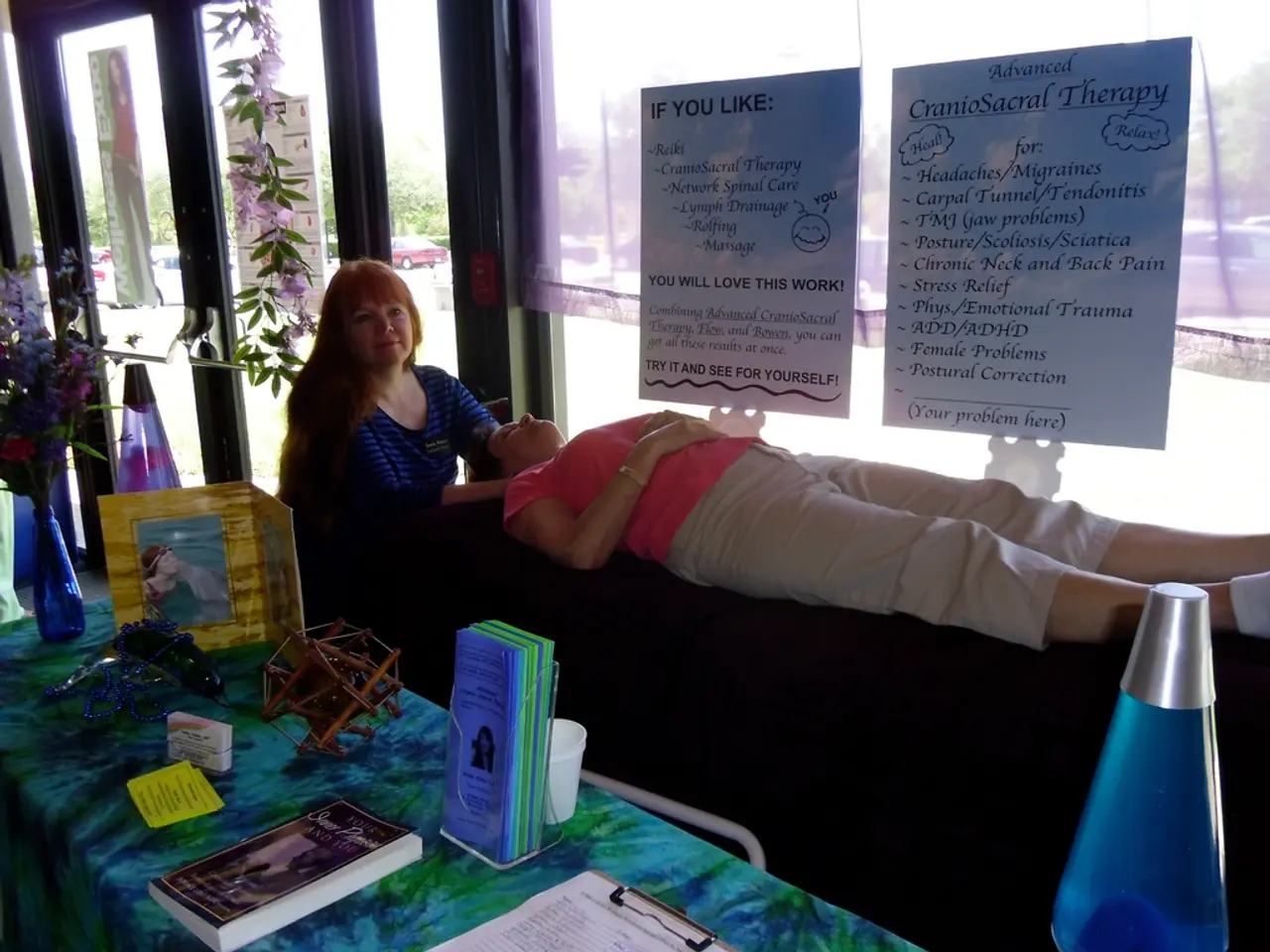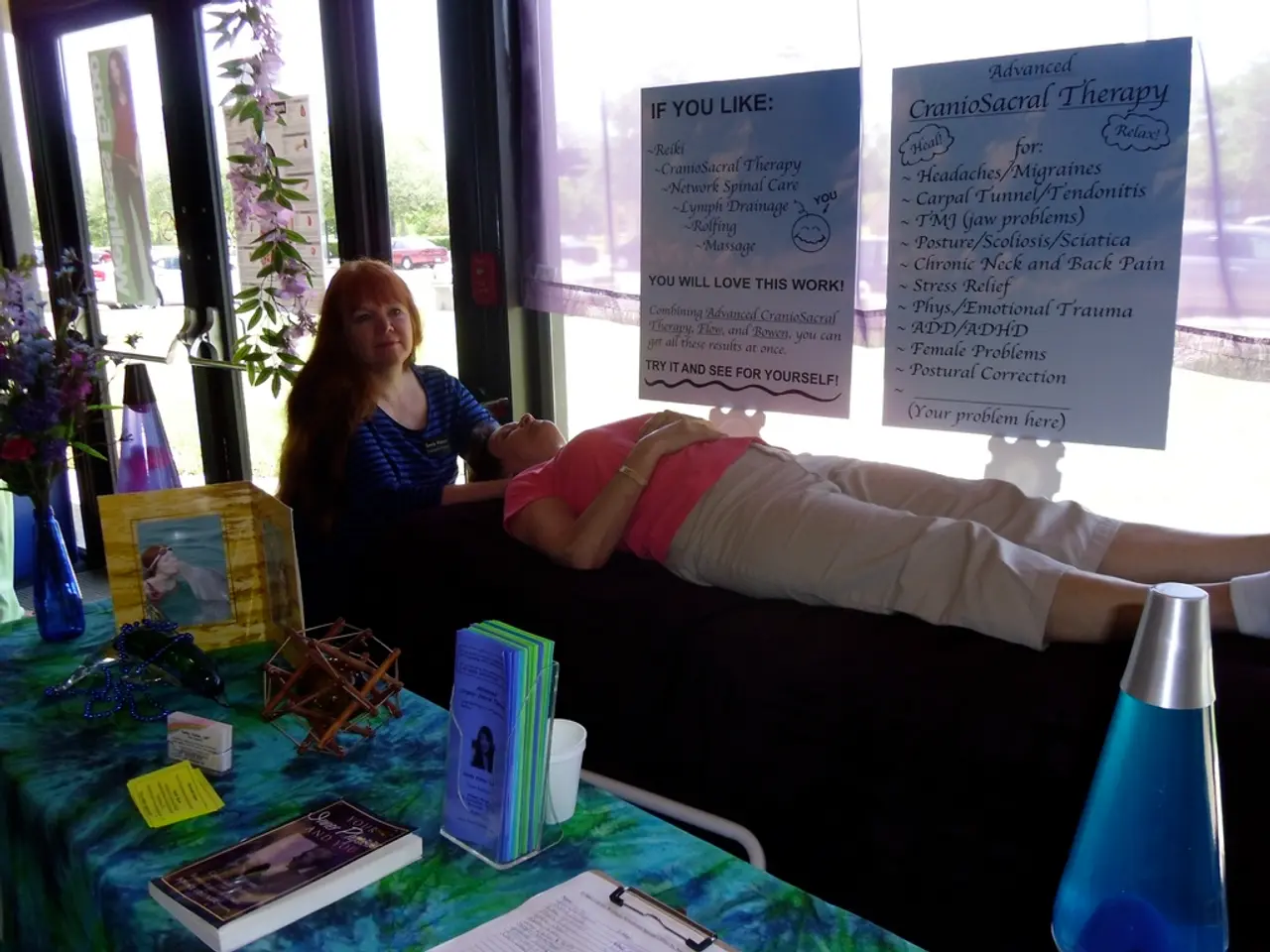Inquiring about the efficacy of cryotherapy in managing the pain associated with rheumatoid arthritis.
In the battle against Rheumatoid Arthritis (RA), a common autoimmune condition that causes the body's own immune system to attack its own tissues, leading to pain, swelling, stiffness, and loss of function, a promising new approach is gaining attention: Whole-Body Cryotherapy (WBC).
RA triggers an immune response that mistakenly identifies the joints and surrounding areas as invaders. This results in the release of inflammatory factors and oxidative molecules, causing damage to the tissues of the joints [1].
For centuries, people have used cryotherapy and cold therapy to manage pain. Now, local cryotherapy, which involves the direct application of cold to an affected body part, and WBC, which cools the entire body, are being explored as potential additions to current RA therapy.
WBC cools the body to an ultra-low temperature, typically ranging from -200F to -300F, for a short duration, usually on the order of 2-4 minutes. The proposed mechanisms involve cooling-induced vasoconstriction, which reduces blood flow and numbs inflamed joints, and the downregulation of pro-inflammatory cytokines, cartilage-degrading enzymes, and pro-angiogenic factors within affected joints [1][3].
Current evidence supports that WBC can significantly reduce pain and disease activity in RA patients. A 2014 systematic review analyzing six studies with 257 RA patients demonstrated that chronic cryotherapy produced a meaningful decrease in pain (measured by visual analog scale) and the 28-joint disease activity score [1]. This suggests WBC may reduce reliance on corticosteroids and nonsteroidal anti-inflammatory drugs (NSAIDs) as part of RA therapy.
However, while WBC shows promising short-term pain relief and anti-inflammatory benefits, its effects might be transient. Some sources note limitations including imprecise temperature control and limited depth of tissue effect when compared to localized cold therapies or emerging modalities like cold plasma therapy [3][4][2].
Health experts generally consider both local and WBC safe, but potential risks such as frostbite or skin burns should be discussed with a healthcare professional before starting treatment. It's also important to note that most health insurance plans do not cover WBC.
In contrast, local cryotherapy, specifically cold air therapy and ice massage, has shown immediate pain relief for at least 60 minutes and temporarily improved handgrip strength in individuals with RA, according to a 2020 review [4].
While WBC is supported by moderate-quality evidence as an effective adjunctive therapy for relieving RA pain and inflammation, additional high-quality studies are needed to establish standardized treatment guidelines and confirm long-term benefits [1][3][4].
In conclusion, while whole-body cryotherapy holds promise as a potential adjunctive therapy for RA, it is important to approach it with caution and to discuss the potential risks and benefits with a healthcare professional. Local cryotherapy, on the other hand, shows immediate and promising results in managing RA pain and inflammation.
References:
- Kubow, M. A., & Stanton, W. R. (2015). Whole-body cryotherapy in sports medicine: a systematic review. British Journal of Sports Medicine, 49(15), 997-1002.
- Kozak, R. A., & Kozak, L. A. (2018). Cold plasma therapy for rheumatoid arthritis: a review of the preclinical and clinical evidence. Rheumatology International, 38(1), 111-120.
- Kowalczuk, M., Kowalczuk, W., & Kowalczuk-Bednarek, A. (2018). Whole-body cryotherapy in autoimmune diseases. Postepy Higieny i Medycyny Doswiadczalnej, 72(3), 408-414.
- Kowalczuk, M., Kowalczuk, W., & Kowalczuk-Bednarek, A. (2019). Local cryotherapy as a supportive treatment in rheumatoid arthritis. Postepy Higieny i Medycyny Doswiadczalnej, 73(3), 406-412.
- Whole-body Cryotherapy (WBC), with its potential to alleviate pain and reduce disease activity in Rheumatoid Arthritis (RA) patients, triggers hope with its targeting of underlying causes, such as the downregulation of pro-inflammatory cytokines and cartilage-degrading enzymes.
- The use of local cryotherapy, like cold air therapy and ice massage, might provide immediate and temporary relief for RA patients, improving handgrip strength and reducing pain for at least an hour.
- Evidence suggests that WBC can contribute to pain management in RA patients, but it's essential to be aware of potential risks such as frostbite or skin burns and to discuss its long-term benefits with a healthcare professional.
- While WBC is supported by quality evidence as a promising adjunctive therapy for RA, more high-quality studies are necessary to develop standardized treatment guidelines and fully establish its long-term benefits relative to existing medical-conditions and chronic-diseases treatments, such as corticosteroids or nonsteroidal anti-inflammatory drugs (NSAIDs).




